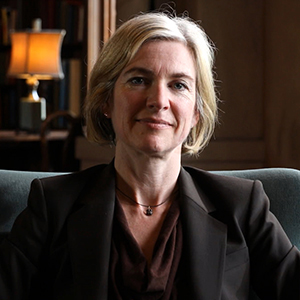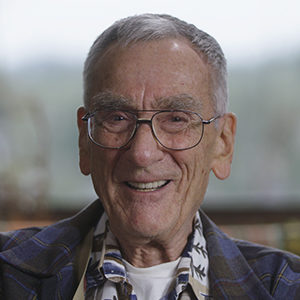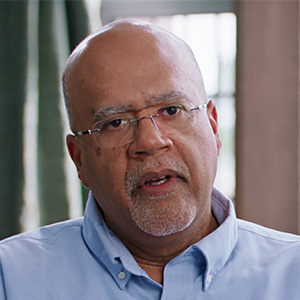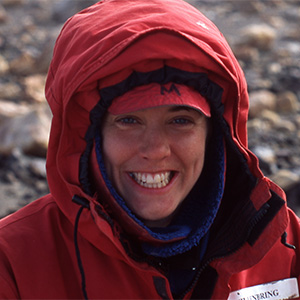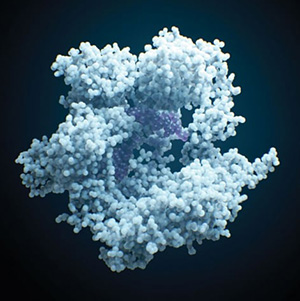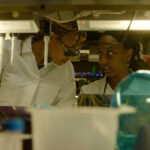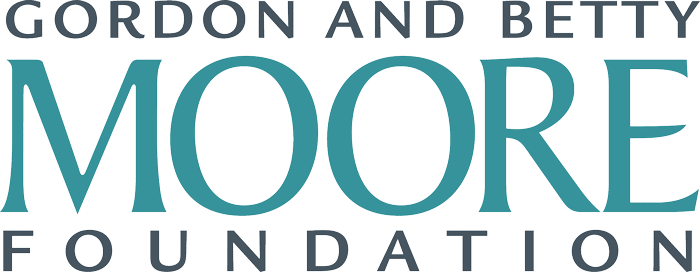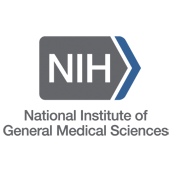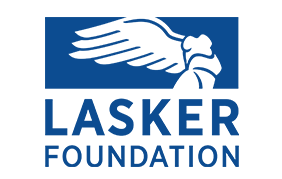Christopher Rudd, Ph.D.: I love science. I love the world of discovery. I love the possibility of imagining how things might be. And I feel that the field of science is a ennobling.
When I started in university, I began to read about the immune system and one of the intriguing aspects of the immune system was its ability to distinguish between self and non-self, to distinguish between you and me.
What I loved about immunology, and it may seem a little counterintuitive and maybe not very scientific, was you spend a lot of your time hypothesizing, coming up with models “This could be this because of this and ABC goes to here, D, oh, doesn’t fit, okay.”
So really it was a bit like pieces of a puzzle and really lovely because it stimulated so much the imagination. And T cells seem to be the big players. They seem to be the orchestrators of the immune response.
So when we think, for example in the case of COVID-19, all these antibody responses. Well, the ability of the B cell to produce antibody for sure depends on its ability to recognize the foreign antigen, in this case it’s SARS COV-2, but they require help from T cells. So already you can see T cells are helping B cells do what they do. But T cells also are endowed with their own ability to differentiate.
Like B cells T cells become activated by recognizing foreign antigen. Now for a T cell to react against a foreign antigen it has to interact with an antigen presenting cells, such as a dendritic cell. Dendritic cells process and present antigen on the cell surface. The antigen is presented by the major histocompatibility complex. The T cell makes initial contact most probably because the dendritic cell releases chemoattractants that bring the T cell into close proximity with itself.
A receptor called the T cell receptor binds to the MHC complex, but this is then followed by various events that cause the T cell contact with the antigen presenting cell to become reinforced. And that reinforcement of binding is accompanied by a rearrangement of receptors that are needed to generate signals in T cells.
What was not known at the time was how these receptors were transmitting signals into T cells to activate the T cells, one, and secondly, to induce the differentiation of T cells. And in 1984 it was clear that the T cell receptor recognizing for an antigen could mediate signals leading to the activation of T cells. And at the same time were identified the CD4 and CD8 co-receptors that define subsets of cells. So these co-receptors bind to the major histocompatibility antigens that present foreign antigen to T cells reinforcing the ability of the T cell to bind to the MHC peptide complex.
There were still big questions. And the most basic was, “How does this T cell receptor complex actually activate cells?” And secondly, “Was there any role at all for tyrosine phosphorylation in T cells that might accompany the activation of these cells?”
Many receptors very clearly inside the cell there is a domain structure that is a kinase domain. The activity of these kinase domains were shown by many people to be needed for the activation of cells induced by these receptors. But nothing of the kind existed for the T cell receptor. And because of my interest in the SRC family, “What about SRC family members SRC kinases induced cancer via these SRC family members?”
And at the time it was really unclear how these SRC kinases operated in normal cells. They had been implicated and retrovirally induced transformation of cells. At this point, a role for cellular forms of SRC hadn’t been identified.

Here’s the T cell receptor. The big question is, “Why in heaven’s name is it so complicated?” You have the inner part, which has the T cell receptor that binds to the peptide as presented by the MHC complex. It had been shown to associate with the CD3 sub units, as well as a primarily intercellular chain called the zeta chain. But there was no evidence of the involvement of kinase domains within this complex.
And we had various scenarios we imagined. Well, if the T cell receptor isn’t inducing a phosphorylation cascade, well, maybe there’s some mysterious cytokine receptor hanging about somewhere that no one has discovered before that has this kind of classic intercellular kinases domain that may proceed TCR ligation.
And we even thought, well, perhaps given that the T cell receptor and it’s associated chains have unique structures, maybe they don’t even employ tyrosine phosphorylation as a mechanism. Maybe T cells just are fundamentally different from other cells.
But always in the back of my mind was, maybe during evolution there was also co-evolution of immune cell-specific signaling proteins in immune cells that adapted itself to the unique structures on the cell surface. That, knowing that T-cells become activated to elicit really different kinds of functions that you don’t find in other cell types, that there must be some kind of immune specific component to all of this.
And in the back of my mind always, I was thinking of CD8 and CD4, which had been thought previously just to reinforce the presentation of antigen, that this would be an excellent way to activate cells if indeed the rest of the T cell receptor complex had no clear link to tyrosine phosphorylation.
In the early days, in comparing the cytoplasmic tails of CD4 and CD8, I identified a motif that was shared between the two. So that gave me a hint that something might be going on. The Eureka experiment was so exciting at the time. We used anti CD4 and CD8, we would precipitate out of lysates from T cells. We would add B32 a substrate for kinases to the purified immuno precipitate. Also, enolase was included in the immuno precipitates. We let it incubate for a period of time and then we could run it out on a gel. We saw a very strong band at about 55-60. In addition, as you can see in lane one, the enolase band below.
When I first saw that result I was stunned. But of course we repeated it many many times. It was clear there was lots of kinase activity associated with CD4 and CD8. We just didn’t know what kind of kinase was there. But what we did notice when we looked at the phosphoryl signatures, that all of the phosphorylation was in tyrosine on the tyrosine residue. We could see nothing on threonine serine.
So at the time given my interest in SRC kinases, I was aware that PB60 SRC had a molecular weight around 60 kD. And here we had these heavily labeled bands at about 55 to 60 kD. So that really suggested that we might be dealing with a SRC kinase. So the next step was for us to take an antibody of a SRC-like kinase called lystra, roughly in that molecular range, and again we ran the assays. And, as you’ll see in panel B in lanes 3 and 4, it was very clear. A SRC family member tyrosine kinase, called Lck, was precipitated associated with CD4 and CD8.
So this was really exciting because for the first time it implicated a tyrosine kinase linked to a surface receptor on T cells, which in turn was active in reinforcing contact during antigen presentation with the T cell receptor while it was responding and generating signals. So it made great sense.
We then ran a second experiment where in this case what we did is we added two antibodies, one against the T cell receptor one against CD4, and we then carried out a precipitation and then ran it on a 2D gel. And what we were able to see was a CD3 gamma delta and epsilon chains, as well as a zeta chain. So each of these chains was being phosphorylated by Lck. So that was the next step. It made sense.
Here you have CD4 coming in, or CD8, phosphorylating the T cell receptor. And subsequent analysis of the sequence of these chains identified a conserved motif, which has two tyrosines separated by 10 to 12 amino acids, which is now called an immuno receptor tyrosine based activation motif or an ITAM motif.
And here you can see how the model unfolds. We have CD4 or could be CD8 binding to Lck. Lck then phosphorylates ITAMs within the CD3 chains, as well as within the zeta chain. This then allows for the recruitment of a second immune specific protein tyrosine kinase. So here we now have two immune specific tyrosine kinases, one Lck, a second ZAP-70.
The work that we did identifying tyrosine phosphorylation cascade in T cells, leading to the identification of specific motifs that are needed to generate signals in cells, led to their being used in something called chimeric antigen receptors. And these are receptors that have a outside domain which is essentially an antibody that will recognize a tumor associated antigen.
You can take these designer molecules, you can put them in T cells and put them back into patients. And they proved very effective in certain cancers, saving thousands of lives. And the race is on to make new kinds of CARs that are more and more effective, in particular able to penetrate solid tumors, because this is where the real challenge lies.
So, in summary, the work we defined a role for SRC family kinases in normal receptor signaling. In the case of CD4 and CD8-p56lck, these initiate T cell activation and are responsible for initiating a phosphorylation cascade. And the discovery that SRC kinases can interact with receptors led to a renewed interest on behalf of pharmaceutical companies to design new drugs, in particular drugs that were inhibitory with the idea in mind that these would be useful in treating autoimmune diseases. And, as I just mentioned, I believe our early work has led to new therapies that have helped to cure patients of cancer.
So I’m very much motivated by the hope that some of the things that we discover will make the world a better place.
Rudd CE, Trevillyan JM, Dasgupta JD, Wong LL, and Schlossman SF. (1988). The CD4 receptor is complexed in detergent lysates to a protein- tyrosine kinase (pp58) from human T lymphocytes. Proc. Natl. Acad. Sci. U.S.A. 85, 5190–5194. doi: 10.1073/pnas.85.14.5190
Rudd CE (2021) How the Discovery of the CD4/CD8-p56lck Complexes Changed Immunology and Immunotherapy. Front. Cell Dev. Biol. 9:626095. doi: 10.3389/fcell.2021.626095
iBiology’s Cells of the Immune System (video)
Producers: Brittany Anderton, Shannon Behrman, Lee Rossoff
Cinematographer & Sound: Productions Albédo Inc.
Editor: Lee Rossoff
Graphics: Chris George, Maggie Hubbard
Associate Producer: Shelley Elizabeth Carter
Executive Producers: Shannon Behrman, Sarah Goodwin, Elliot Kirschner

